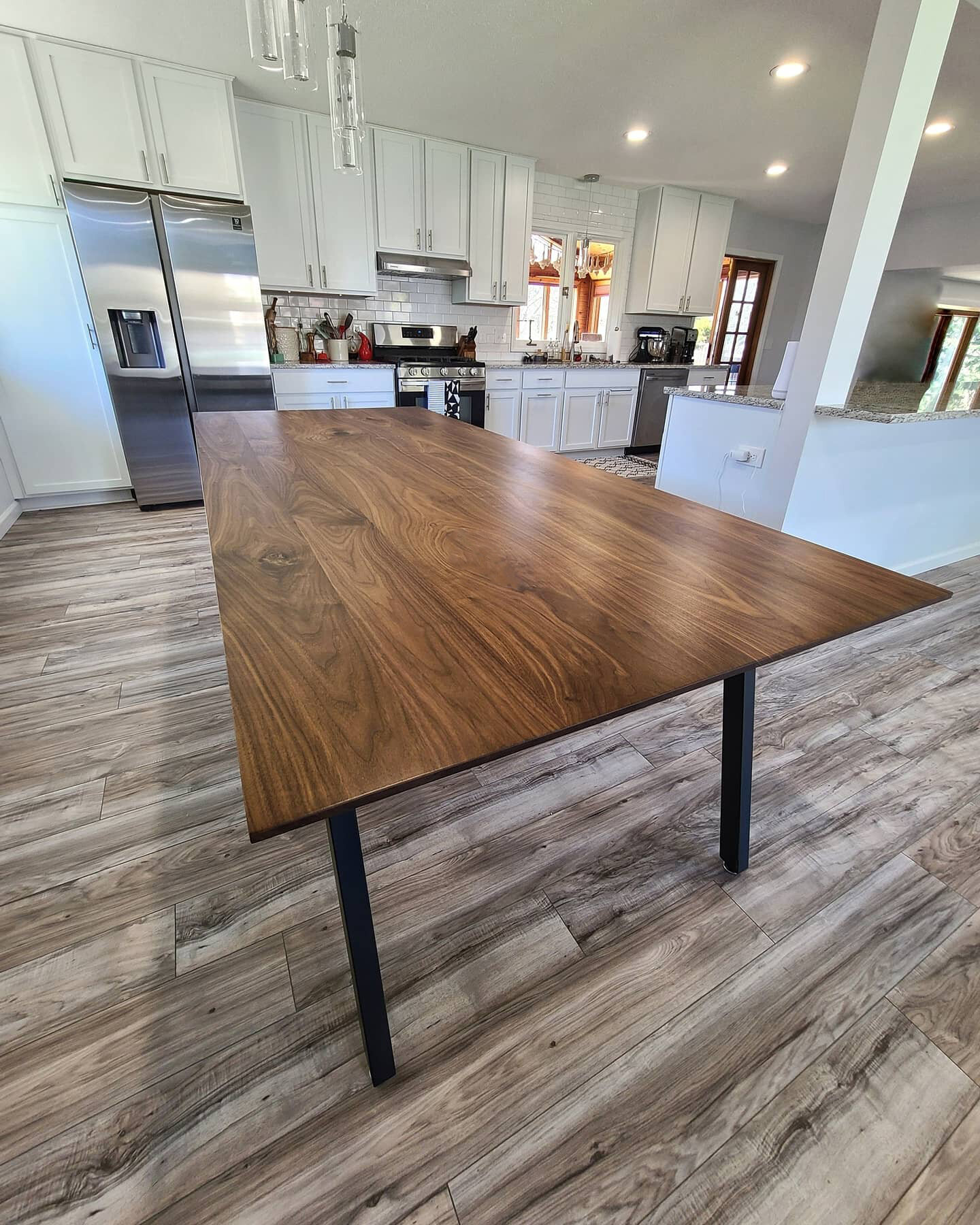How to Identify High Quality Wood Furniture, 5 Key Criteria
When buying new furniture, you are faced with a choice. Buy something fast, cheap and easy OR invest in something that will endure and hold up over the long term. Sometimes that 1-2 year end table is “good enough” and will get the job done. But once you’ve decided that you are ready for something extra special for that special space in your home - e.g. statement dining table that is the focal point of the space and your family will sit at every night - you may be asking yourself - what exactly defines “quality” and where do I start?
Anyone can identify a rip, scratch, or stain, or decide whether they like a certain color, without special knowledge. But judging whether a piece is likely to last two years or twenty — just by looking at it — is harder stuff. So I’ve boiled it down for you! Here are the 5 key things to keep in mind and look for when shopping for high quality furniture:
1) WOOD SPECIES - Of all the tens of thousands of different woods species in the world, only a select subset are suitable material candidates for high quality furniture. And a big component of that determination has to do with the wood’s hardness or density. Have you heard of the Janka Hardness scale? In simplest terms, it is a measurement of the wood’s resistance to denting and wear - a higher rating = denser/more durable and a lower rating = softer/less durable. As a general gauge, anything less than an 800 rating gives me pause. Common woods like Black Walnut (1,010 rating) or White Oak (1,360 rating) are naturally prime candidates as sturdy, high quality materials, while softer woods like white pine (420 rating) or Poplar (540 rating) are susceptible to nicks and scratches as soon as the wood is put to the test.
Biggest takeaway: Identify the wood used in the furniture you are purchasing, confirm the Janka Hardness (thank you, Mr. Google) and confirm that the durability of said species fits the function of the piece.
2) WOOD QUALITY - As much as I can appreciate the character of a good wood knot, void or crack, you can certainly have too much of a good thing. For example, knots are a natural feature in solid wood, however, they are also the areas of the tree that are weaker than the rest. If your furniture, such as a table, has a lot of imperfections like knots/voids/cracks visible, it means that the wood is weaker in those areas. If the manufacturer is using high quality, premium lumber, the wood will look fairly clean of these serious imperfections and any existing imperfections are treated appropriately to stabilize (e.g. filled with resin/other filler, as appropriate).
Biggest takeaway: Make sure that imperfections like knots, cracks and voids in the wood are reasonable in number and appropriately treated to stabilize over time (most common approach is filling with resin or other solidifying filler).
3) JOINT CONSTRUCTION - Joint construction is THE main determinant of quality furniture. Anything held together with staples or nails can be automatically thrown into the categorization of shoddy construction. Ditto if it’s glued and you can see the glue. Some examples of good construction? (1) Dowels (wooden pegs slotted into two opposing holes) (2) Dovetail joints (interlocking squarish ‘teeth’), (3) Mortise-and-tenon joints (narrowed end of one piece inserted into a hole in the other).
For any 90 degree angles incorporated into the piece, a miter (45 degree) joint is much preferred to a butt (stacked) joint so that the wood can flow from one surface to the next.
Biggest takeaway: Take a look at the joints of the furniture and determine their level of seamlessness. With high quality furniture, that wood should look like it effortlessly came together and flow from one board to the next.
4) FINISH TYPE - Finish is EVERYTHING!! Everything can be built perfectly up until this point, but if the wrong finish is placed on the piece, quality and durability can automatically be lost. Without going into the boring details of finish types, there are two key features of a solid wood finish (1) Water Resistance - with a high quality, premium finish, there should be absolutely no concerns of water rings (coasters or no coasters). Note, if the manufacturer has applied the Cadillac-level finish (i.e. commercial grade) on your wood table, you should practically be able to dunk that piece of wood in a pool, and it will come out unscathed….magic! (2) Scratch Resistance - while wood is by no means indestructible, it should have a level of durability that will holdup against a reasonable level of daily wear and tear. If the piece is meant to be a high use surface (think dining tables, bar table in a restaurant, etc.), it is worth inquiring about finish upgrades for added protection.
Biggest takeaway: Ask about the finish used on the furniture and about its durability qualities. At a minimum, the finish on your piece of furniture should have a high level of water resistance (i.e. no water rings!). Bonus points for higher level of resistance to scratching.
5) CRAFTSMANSHIP - Truly high quality furniture pieces are almost always hand-crafted instead of being assembled in a factory. We are talking about construction and fabrication by experts who have years of experience and craft under their belts and NOT simply assembly by anyone off the street . Find fabricators who have dedicated their lives to woodworking, finishing, and other aspects of furniture crafting and you will find the quality isn’t far behind.
Biggest takeaway: Ask about the builders behind the furniture i.e. know how/where the furniture is being built and by whom. This will likely be a strong indicator of the level of experience, quality and attention to detail that is being channeled into construction.
Armed with this information, I hope you feel much more confident about approaching future furniture purchases and knowing what to look for when seeking to purchase something with true quality. Happy hunting!



